Array
(
[field_titolo_frontend] => Array
(
[#theme] => field
[#weight] => -4
[#title] => Titolo frontend
[#access] => 1
[#label_display] => above
[#view_mode] => teaser
[#language] => und
[#field_name] => field_titolo_frontend
[#field_type] => text_long
[#field_translatable] => 0
[#entity_type] => node
[#bundle] => elemento_accordion
[#object] => stdClass Object
(
[vid] => 420791
[uid] => 10762
[title] => Convegno 19 maggio sessione 6 Cooking Quality Learning with FLEXspace Recipes for Designing Academic Spaces
[log] =>
[status] => 1
[comment] => 0
[promote] => 1
[sticky] => 0
[nid] => 98545
[type] => elemento_accordion
[language] => it
[created] => 1680161689
[changed] => 1684847259
[tnid] => 0
[translate] => 0
[revision_timestamp] => 1684847259
[revision_uid] => 10762
[taxonomy_vocabulary_8] => Array
(
)
[body] => Array
(
[und] => Array
(
[0] => Array
(
[value] =>
Education requires an expanding collection of ingredients for teaching & learning with technology and within classrooms. But without good recipes for how to integrate & manage the academic ingredients, the quality of learning will be unreliable and ineffective. FLEXspace provides institutions with a powerful free and open book of recipes for designing quality learning environments.
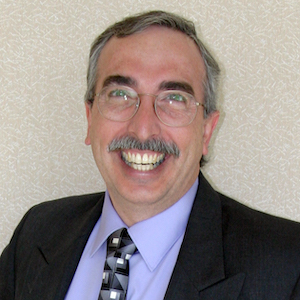 Prof. Gerard L. Hanley – Director, CSULB Center for Usability in Design and Accessibility (CUDA), Executive Director, MERLOT – SkillsCommons, Professor Emeritus, Department of Psychology California State University, Long Beach
Prof. Gerard L. Hanley – Director, CSULB Center for Usability in Design and Accessibility (CUDA), Executive Director, MERLOT – SkillsCommons, Professor Emeritus, Department of Psychology California State University, Long Beach
Gerry Hanley Ph.D. is the Executive Director of MERLOT (Multimedia Educational Resource for Learning and Online Teaching, www.merlot.org) and SkillsCommons (www.skillscommons.org) at California State University Long Beach. At CSULB, Gerry is also the Director of the Center for Usability in Design and Accessibility, Professor Emeritus of Psychology, and a founding partner of FLEXspace.
[summary] =>
[format] => 2
[safe_value] =>
Education requires an expanding collection of ingredients for teaching & learning with technology and within classrooms. But without good recipes for how to integrate & manage the academic ingredients, the quality of learning will be unreliable and ineffective. FLEXspace provides institutions with a powerful free and open book of recipes for designing quality learning environments.
 Prof. Gerard L. Hanley – Director, CSULB Center for Usability in Design and Accessibility (CUDA), Executive Director, MERLOT – SkillsCommons, Professor Emeritus, Department of Psychology California State University, Long Beach
Prof. Gerard L. Hanley – Director, CSULB Center for Usability in Design and Accessibility (CUDA), Executive Director, MERLOT – SkillsCommons, Professor Emeritus, Department of Psychology California State University, Long Beach
Gerry Hanley Ph.D. is the Executive Director of MERLOT (Multimedia Educational Resource for Learning and Online Teaching, www.merlot.org) and SkillsCommons (www.skillscommons.org) at California State University Long Beach. At CSULB, Gerry is also the Director of the Center for Usability in Design and Accessibility, Professor Emeritus of Psychology, and a founding partner of FLEXspace.
[safe_summary] =>
)
)
)
[field_accordion_state] => Array
(
[und] => Array
(
[0] => Array
(
[value] => chiuso
)
)
)
[field_allegato_element] => Array
(
[und] => Array
(
[0] => Array
(
[nid] => 100125
[access] => 1
[node] => stdClass Object
(
[vid] => 425854
[uid] => 10762
[title] => Slides dell'intervento di Gerard L. Hanley
[log] =>
[status] => 1
[comment] => 0
[promote] => 1
[sticky] => 0
[nid] => 100125
[type] => allegato
[language] => it
[created] => 1684847277
[changed] => 1684847277
[tnid] => 0
[translate] => 0
[revision_timestamp] => 1684847277
[revision_uid] => 10762
[taxonomy_vocabulary_2] => Array
(
)
[taxonomy_vocabulary_8] => Array
(
)
[body] => Array
(
)
[field_titolo_frontend_all] => Array
(
)
[field_allegato_file] => Array
(
[und] => Array
(
[0] => Array
(
[fid] => 119145
[uid] => 10762
[filename] => 1_Hanley_Presentazione_ONLINE.pdf
[uri] => public://1_Hanley_Presentazione_ONLINE.pdf
[filemime] => application/pdf
[filesize] => 3191187
[status] => 1
[timestamp] => 1684847271
[type] => document
[field_folder] => Array
(
[und] => Array
(
[0] => Array
(
[tid] => 2048
)
)
)
[metadata] => Array
(
)
[display] => 1
[description] =>
)
)
)
[name] => teaching4learning
[picture] => 0
[data] => b:0;
[num_revisions] => 1
[current_revision_id] => 425854
[is_current] => 1
[is_pending] =>
[revision_moderation] =>
)
)
)
)
[field_outline_level] => Array
(
[und] => Array
(
[0] => Array
(
[value] => h3
)
)
)
[field_titolo_frontend] => Array
(
[und] => Array
(
[0] => Array
(
[value] => Cooking Quality Learning with FLEXspace Recipes for Designing Academic Spaces
[format] =>
[safe_value] => Cooking Quality Learning with FLEXspace Recipes for Designing Academic Spaces
)
)
)
[name] => teaching4learning
[picture] => 0
[data] => b:0;
[num_revisions] => 1
[current_revision_id] => 420791
[is_current] => 1
[is_pending] =>
[revision_moderation] =>
[entity_view_prepared] => 1
)
[#items] => Array
(
[0] => Array
(
[value] => Cooking Quality Learning with FLEXspace Recipes for Designing Academic Spaces
[format] =>
[safe_value] => Cooking Quality Learning with FLEXspace Recipes for Designing Academic Spaces
)
)
[#formatter] => text_default
[0] => Array
(
[#markup] => Cooking Quality Learning with FLEXspace Recipes for Designing Academic Spaces
)
)
[body] => Array
(
[#theme] => field
[#weight] => -3
[#title] => Body
[#access] => 1
[#label_display] => hidden
[#view_mode] => teaser
[#language] => und
[#field_name] => body
[#field_type] => text_with_summary
[#field_translatable] => 0
[#entity_type] => node
[#bundle] => elemento_accordion
[#object] => stdClass Object
(
[vid] => 420791
[uid] => 10762
[title] => Convegno 19 maggio sessione 6 Cooking Quality Learning with FLEXspace Recipes for Designing Academic Spaces
[log] =>
[status] => 1
[comment] => 0
[promote] => 1
[sticky] => 0
[nid] => 98545
[type] => elemento_accordion
[language] => it
[created] => 1680161689
[changed] => 1684847259
[tnid] => 0
[translate] => 0
[revision_timestamp] => 1684847259
[revision_uid] => 10762
[taxonomy_vocabulary_8] => Array
(
)
[body] => Array
(
[und] => Array
(
[0] => Array
(
[value] =>
Education requires an expanding collection of ingredients for teaching & learning with technology and within classrooms. But without good recipes for how to integrate & manage the academic ingredients, the quality of learning will be unreliable and ineffective. FLEXspace provides institutions with a powerful free and open book of recipes for designing quality learning environments.
 Prof. Gerard L. Hanley – Director, CSULB Center for Usability in Design and Accessibility (CUDA), Executive Director, MERLOT – SkillsCommons, Professor Emeritus, Department of Psychology California State University, Long Beach
Prof. Gerard L. Hanley – Director, CSULB Center for Usability in Design and Accessibility (CUDA), Executive Director, MERLOT – SkillsCommons, Professor Emeritus, Department of Psychology California State University, Long Beach
Gerry Hanley Ph.D. is the Executive Director of MERLOT (Multimedia Educational Resource for Learning and Online Teaching, www.merlot.org) and SkillsCommons (www.skillscommons.org) at California State University Long Beach. At CSULB, Gerry is also the Director of the Center for Usability in Design and Accessibility, Professor Emeritus of Psychology, and a founding partner of FLEXspace.
[summary] =>
[format] => 2
[safe_value] =>
Education requires an expanding collection of ingredients for teaching & learning with technology and within classrooms. But without good recipes for how to integrate & manage the academic ingredients, the quality of learning will be unreliable and ineffective. FLEXspace provides institutions with a powerful free and open book of recipes for designing quality learning environments.
 Prof. Gerard L. Hanley – Director, CSULB Center for Usability in Design and Accessibility (CUDA), Executive Director, MERLOT – SkillsCommons, Professor Emeritus, Department of Psychology California State University, Long Beach
Prof. Gerard L. Hanley – Director, CSULB Center for Usability in Design and Accessibility (CUDA), Executive Director, MERLOT – SkillsCommons, Professor Emeritus, Department of Psychology California State University, Long Beach
Gerry Hanley Ph.D. is the Executive Director of MERLOT (Multimedia Educational Resource for Learning and Online Teaching, www.merlot.org) and SkillsCommons (www.skillscommons.org) at California State University Long Beach. At CSULB, Gerry is also the Director of the Center for Usability in Design and Accessibility, Professor Emeritus of Psychology, and a founding partner of FLEXspace.
[safe_summary] =>
)
)
)
[field_accordion_state] => Array
(
[und] => Array
(
[0] => Array
(
[value] => chiuso
)
)
)
[field_allegato_element] => Array
(
[und] => Array
(
[0] => Array
(
[nid] => 100125
[access] => 1
[node] => stdClass Object
(
[vid] => 425854
[uid] => 10762
[title] => Slides dell'intervento di Gerard L. Hanley
[log] =>
[status] => 1
[comment] => 0
[promote] => 1
[sticky] => 0
[nid] => 100125
[type] => allegato
[language] => it
[created] => 1684847277
[changed] => 1684847277
[tnid] => 0
[translate] => 0
[revision_timestamp] => 1684847277
[revision_uid] => 10762
[taxonomy_vocabulary_2] => Array
(
)
[taxonomy_vocabulary_8] => Array
(
)
[body] => Array
(
)
[field_titolo_frontend_all] => Array
(
)
[field_allegato_file] => Array
(
[und] => Array
(
[0] => Array
(
[fid] => 119145
[uid] => 10762
[filename] => 1_Hanley_Presentazione_ONLINE.pdf
[uri] => public://1_Hanley_Presentazione_ONLINE.pdf
[filemime] => application/pdf
[filesize] => 3191187
[status] => 1
[timestamp] => 1684847271
[type] => document
[field_folder] => Array
(
[und] => Array
(
[0] => Array
(
[tid] => 2048
)
)
)
[metadata] => Array
(
)
[display] => 1
[description] =>
)
)
)
[name] => teaching4learning
[picture] => 0
[data] => b:0;
[num_revisions] => 1
[current_revision_id] => 425854
[is_current] => 1
[is_pending] =>
[revision_moderation] =>
)
)
)
)
[field_outline_level] => Array
(
[und] => Array
(
[0] => Array
(
[value] => h3
)
)
)
[field_titolo_frontend] => Array
(
[und] => Array
(
[0] => Array
(
[value] => Cooking Quality Learning with FLEXspace Recipes for Designing Academic Spaces
[format] =>
[safe_value] => Cooking Quality Learning with FLEXspace Recipes for Designing Academic Spaces
)
)
)
[name] => teaching4learning
[picture] => 0
[data] => b:0;
[num_revisions] => 1
[current_revision_id] => 420791
[is_current] => 1
[is_pending] =>
[revision_moderation] =>
[entity_view_prepared] => 1
)
[#items] => Array
(
[0] => Array
(
[value] =>
Education requires an expanding collection of ingredients for teaching & learning with technology and within classrooms. But without good recipes for how to integrate & manage the academic ingredients, the quality of learning will be unreliable and ineffective. FLEXspace provides institutions with a powerful free and open book of recipes for designing quality learning environments.
 Prof. Gerard L. Hanley – Director, CSULB Center for Usability in Design and Accessibility (CUDA), Executive Director, MERLOT – SkillsCommons, Professor Emeritus, Department of Psychology California State University, Long Beach
Prof. Gerard L. Hanley – Director, CSULB Center for Usability in Design and Accessibility (CUDA), Executive Director, MERLOT – SkillsCommons, Professor Emeritus, Department of Psychology California State University, Long Beach
Gerry Hanley Ph.D. is the Executive Director of MERLOT (Multimedia Educational Resource for Learning and Online Teaching, www.merlot.org) and SkillsCommons (www.skillscommons.org) at California State University Long Beach. At CSULB, Gerry is also the Director of the Center for Usability in Design and Accessibility, Professor Emeritus of Psychology, and a founding partner of FLEXspace.
[summary] =>
[format] => 2
[safe_value] =>
Education requires an expanding collection of ingredients for teaching & learning with technology and within classrooms. But without good recipes for how to integrate & manage the academic ingredients, the quality of learning will be unreliable and ineffective. FLEXspace provides institutions with a powerful free and open book of recipes for designing quality learning environments.
 Prof. Gerard L. Hanley – Director, CSULB Center for Usability in Design and Accessibility (CUDA), Executive Director, MERLOT – SkillsCommons, Professor Emeritus, Department of Psychology California State University, Long Beach
Prof. Gerard L. Hanley – Director, CSULB Center for Usability in Design and Accessibility (CUDA), Executive Director, MERLOT – SkillsCommons, Professor Emeritus, Department of Psychology California State University, Long Beach
Gerry Hanley Ph.D. is the Executive Director of MERLOT (Multimedia Educational Resource for Learning and Online Teaching, www.merlot.org) and SkillsCommons (www.skillscommons.org) at California State University Long Beach. At CSULB, Gerry is also the Director of the Center for Usability in Design and Accessibility, Professor Emeritus of Psychology, and a founding partner of FLEXspace.
[safe_summary] =>
)
)
[#formatter] => text_summary_or_trimmed
[0] => Array
(
[#markup] =>
Education requires an expanding collection of ingredients for teaching & learning with technology and within classrooms. But without good recipes for how to integrate & manage the academic ingredients, the quality of learning will be unreliable and ineffective. FLEXspace provides institutions with a powerful free and open book of recipes for designing quality learning environments.
)
)
[field_allegato_element] => Array
(
[#theme] => field
[#weight] => -2
[#title] => Elemento allegato
[#access] => 1
[#label_display] => above
[#view_mode] => teaser
[#language] => und
[#field_name] => field_allegato_element
[#field_type] => node_reference
[#field_translatable] => 0
[#entity_type] => node
[#bundle] => elemento_accordion
[#object] => stdClass Object
(
[vid] => 420791
[uid] => 10762
[title] => Convegno 19 maggio sessione 6 Cooking Quality Learning with FLEXspace Recipes for Designing Academic Spaces
[log] =>
[status] => 1
[comment] => 0
[promote] => 1
[sticky] => 0
[nid] => 98545
[type] => elemento_accordion
[language] => it
[created] => 1680161689
[changed] => 1684847259
[tnid] => 0
[translate] => 0
[revision_timestamp] => 1684847259
[revision_uid] => 10762
[taxonomy_vocabulary_8] => Array
(
)
[body] => Array
(
[und] => Array
(
[0] => Array
(
[value] =>
Education requires an expanding collection of ingredients for teaching & learning with technology and within classrooms. But without good recipes for how to integrate & manage the academic ingredients, the quality of learning will be unreliable and ineffective. FLEXspace provides institutions with a powerful free and open book of recipes for designing quality learning environments.
 Prof. Gerard L. Hanley – Director, CSULB Center for Usability in Design and Accessibility (CUDA), Executive Director, MERLOT – SkillsCommons, Professor Emeritus, Department of Psychology California State University, Long Beach
Prof. Gerard L. Hanley – Director, CSULB Center for Usability in Design and Accessibility (CUDA), Executive Director, MERLOT – SkillsCommons, Professor Emeritus, Department of Psychology California State University, Long Beach
Gerry Hanley Ph.D. is the Executive Director of MERLOT (Multimedia Educational Resource for Learning and Online Teaching, www.merlot.org) and SkillsCommons (www.skillscommons.org) at California State University Long Beach. At CSULB, Gerry is also the Director of the Center for Usability in Design and Accessibility, Professor Emeritus of Psychology, and a founding partner of FLEXspace.
[summary] =>
[format] => 2
[safe_value] =>
Education requires an expanding collection of ingredients for teaching & learning with technology and within classrooms. But without good recipes for how to integrate & manage the academic ingredients, the quality of learning will be unreliable and ineffective. FLEXspace provides institutions with a powerful free and open book of recipes for designing quality learning environments.
 Prof. Gerard L. Hanley – Director, CSULB Center for Usability in Design and Accessibility (CUDA), Executive Director, MERLOT – SkillsCommons, Professor Emeritus, Department of Psychology California State University, Long Beach
Prof. Gerard L. Hanley – Director, CSULB Center for Usability in Design and Accessibility (CUDA), Executive Director, MERLOT – SkillsCommons, Professor Emeritus, Department of Psychology California State University, Long Beach
Gerry Hanley Ph.D. is the Executive Director of MERLOT (Multimedia Educational Resource for Learning and Online Teaching, www.merlot.org) and SkillsCommons (www.skillscommons.org) at California State University Long Beach. At CSULB, Gerry is also the Director of the Center for Usability in Design and Accessibility, Professor Emeritus of Psychology, and a founding partner of FLEXspace.
[safe_summary] =>
)
)
)
[field_accordion_state] => Array
(
[und] => Array
(
[0] => Array
(
[value] => chiuso
)
)
)
[field_allegato_element] => Array
(
[und] => Array
(
[0] => Array
(
[nid] => 100125
[access] => 1
[node] => stdClass Object
(
[vid] => 425854
[uid] => 10762
[title] => Slides dell'intervento di Gerard L. Hanley
[log] =>
[status] => 1
[comment] => 0
[promote] => 1
[sticky] => 0
[nid] => 100125
[type] => allegato
[language] => it
[created] => 1684847277
[changed] => 1684847277
[tnid] => 0
[translate] => 0
[revision_timestamp] => 1684847277
[revision_uid] => 10762
[taxonomy_vocabulary_2] => Array
(
)
[taxonomy_vocabulary_8] => Array
(
)
[body] => Array
(
)
[field_titolo_frontend_all] => Array
(
)
[field_allegato_file] => Array
(
[und] => Array
(
[0] => Array
(
[fid] => 119145
[uid] => 10762
[filename] => 1_Hanley_Presentazione_ONLINE.pdf
[uri] => public://1_Hanley_Presentazione_ONLINE.pdf
[filemime] => application/pdf
[filesize] => 3191187
[status] => 1
[timestamp] => 1684847271
[type] => document
[field_folder] => Array
(
[und] => Array
(
[0] => Array
(
[tid] => 2048
)
)
)
[metadata] => Array
(
)
[display] => 1
[description] =>
)
)
)
[name] => teaching4learning
[picture] => 0
[data] => b:0;
[num_revisions] => 1
[current_revision_id] => 425854
[is_current] => 1
[is_pending] =>
[revision_moderation] =>
)
)
)
)
[field_outline_level] => Array
(
[und] => Array
(
[0] => Array
(
[value] => h3
)
)
)
[field_titolo_frontend] => Array
(
[und] => Array
(
[0] => Array
(
[value] => Cooking Quality Learning with FLEXspace Recipes for Designing Academic Spaces
[format] =>
[safe_value] => Cooking Quality Learning with FLEXspace Recipes for Designing Academic Spaces
)
)
)
[name] => teaching4learning
[picture] => 0
[data] => b:0;
[num_revisions] => 1
[current_revision_id] => 420791
[is_current] => 1
[is_pending] =>
[revision_moderation] =>
[entity_view_prepared] => 1
)
[#items] => Array
(
[0] => Array
(
[nid] => 100125
[access] => 1
[node] => stdClass Object
(
[vid] => 425854
[uid] => 10762
[title] => Slides dell'intervento di Gerard L. Hanley
[log] =>
[status] => 1
[comment] => 0
[promote] => 1
[sticky] => 0
[nid] => 100125
[type] => allegato
[language] => it
[created] => 1684847277
[changed] => 1684847277
[tnid] => 0
[translate] => 0
[revision_timestamp] => 1684847277
[revision_uid] => 10762
[taxonomy_vocabulary_2] => Array
(
)
[taxonomy_vocabulary_8] => Array
(
)
[body] => Array
(
)
[field_titolo_frontend_all] => Array
(
)
[field_allegato_file] => Array
(
[und] => Array
(
[0] => Array
(
[fid] => 119145
[uid] => 10762
[filename] => 1_Hanley_Presentazione_ONLINE.pdf
[uri] => public://1_Hanley_Presentazione_ONLINE.pdf
[filemime] => application/pdf
[filesize] => 3191187
[status] => 1
[timestamp] => 1684847271
[type] => document
[field_folder] => Array
(
[und] => Array
(
[0] => Array
(
[tid] => 2048
)
)
)
[metadata] => Array
(
)
[display] => 1
[description] =>
)
)
)
[name] => teaching4learning
[picture] => 0
[data] => b:0;
[num_revisions] => 1
[current_revision_id] => 425854
[is_current] => 1
[is_pending] =>
[revision_moderation] =>
)
)
)
[#formatter] => node_reference_default
[0] => Array
(
[#type] => link
[#title] => Slides dell'intervento di Gerard L. Hanley
[#href] => node/100125
[#options] => Array
(
[entity_type] => node
[entity] => stdClass Object
(
[vid] => 425854
[uid] => 10762
[title] => Slides dell'intervento di Gerard L. Hanley
[log] =>
[status] => 1
[comment] => 0
[promote] => 1
[sticky] => 0
[nid] => 100125
[type] => allegato
[language] => it
[created] => 1684847277
[changed] => 1684847277
[tnid] => 0
[translate] => 0
[revision_timestamp] => 1684847277
[revision_uid] => 10762
[taxonomy_vocabulary_2] => Array
(
)
[taxonomy_vocabulary_8] => Array
(
)
[body] => Array
(
)
[field_titolo_frontend_all] => Array
(
)
[field_allegato_file] => Array
(
[und] => Array
(
[0] => Array
(
[fid] => 119145
[uid] => 10762
[filename] => 1_Hanley_Presentazione_ONLINE.pdf
[uri] => public://1_Hanley_Presentazione_ONLINE.pdf
[filemime] => application/pdf
[filesize] => 3191187
[status] => 1
[timestamp] => 1684847271
[type] => document
[field_folder] => Array
(
[und] => Array
(
[0] => Array
(
[tid] => 2048
)
)
)
[metadata] => Array
(
)
[display] => 1
[description] =>
)
)
)
[name] => teaching4learning
[picture] => 0
[data] => b:0;
[num_revisions] => 1
[current_revision_id] => 425854
[is_current] => 1
[is_pending] =>
[revision_moderation] =>
)
)
)
)
[field_accordion_state] => Array
(
[#theme] => field
[#weight] => -1
[#title] => Aperto/Chiuso
[#access] => 1
[#label_display] => above
[#view_mode] => teaser
[#language] => und
[#field_name] => field_accordion_state
[#field_type] => list_text
[#field_translatable] => 0
[#entity_type] => node
[#bundle] => elemento_accordion
[#object] => stdClass Object
(
[vid] => 420791
[uid] => 10762
[title] => Convegno 19 maggio sessione 6 Cooking Quality Learning with FLEXspace Recipes for Designing Academic Spaces
[log] =>
[status] => 1
[comment] => 0
[promote] => 1
[sticky] => 0
[nid] => 98545
[type] => elemento_accordion
[language] => it
[created] => 1680161689
[changed] => 1684847259
[tnid] => 0
[translate] => 0
[revision_timestamp] => 1684847259
[revision_uid] => 10762
[taxonomy_vocabulary_8] => Array
(
)
[body] => Array
(
[und] => Array
(
[0] => Array
(
[value] =>
Education requires an expanding collection of ingredients for teaching & learning with technology and within classrooms. But without good recipes for how to integrate & manage the academic ingredients, the quality of learning will be unreliable and ineffective. FLEXspace provides institutions with a powerful free and open book of recipes for designing quality learning environments.
 Prof. Gerard L. Hanley – Director, CSULB Center for Usability in Design and Accessibility (CUDA), Executive Director, MERLOT – SkillsCommons, Professor Emeritus, Department of Psychology California State University, Long Beach
Prof. Gerard L. Hanley – Director, CSULB Center for Usability in Design and Accessibility (CUDA), Executive Director, MERLOT – SkillsCommons, Professor Emeritus, Department of Psychology California State University, Long Beach
Gerry Hanley Ph.D. is the Executive Director of MERLOT (Multimedia Educational Resource for Learning and Online Teaching, www.merlot.org) and SkillsCommons (www.skillscommons.org) at California State University Long Beach. At CSULB, Gerry is also the Director of the Center for Usability in Design and Accessibility, Professor Emeritus of Psychology, and a founding partner of FLEXspace.
[summary] =>
[format] => 2
[safe_value] =>
Education requires an expanding collection of ingredients for teaching & learning with technology and within classrooms. But without good recipes for how to integrate & manage the academic ingredients, the quality of learning will be unreliable and ineffective. FLEXspace provides institutions with a powerful free and open book of recipes for designing quality learning environments.
 Prof. Gerard L. Hanley – Director, CSULB Center for Usability in Design and Accessibility (CUDA), Executive Director, MERLOT – SkillsCommons, Professor Emeritus, Department of Psychology California State University, Long Beach
Prof. Gerard L. Hanley – Director, CSULB Center for Usability in Design and Accessibility (CUDA), Executive Director, MERLOT – SkillsCommons, Professor Emeritus, Department of Psychology California State University, Long Beach
Gerry Hanley Ph.D. is the Executive Director of MERLOT (Multimedia Educational Resource for Learning and Online Teaching, www.merlot.org) and SkillsCommons (www.skillscommons.org) at California State University Long Beach. At CSULB, Gerry is also the Director of the Center for Usability in Design and Accessibility, Professor Emeritus of Psychology, and a founding partner of FLEXspace.
[safe_summary] =>
)
)
)
[field_accordion_state] => Array
(
[und] => Array
(
[0] => Array
(
[value] => chiuso
)
)
)
[field_allegato_element] => Array
(
[und] => Array
(
[0] => Array
(
[nid] => 100125
[access] => 1
[node] => stdClass Object
(
[vid] => 425854
[uid] => 10762
[title] => Slides dell'intervento di Gerard L. Hanley
[log] =>
[status] => 1
[comment] => 0
[promote] => 1
[sticky] => 0
[nid] => 100125
[type] => allegato
[language] => it
[created] => 1684847277
[changed] => 1684847277
[tnid] => 0
[translate] => 0
[revision_timestamp] => 1684847277
[revision_uid] => 10762
[taxonomy_vocabulary_2] => Array
(
)
[taxonomy_vocabulary_8] => Array
(
)
[body] => Array
(
)
[field_titolo_frontend_all] => Array
(
)
[field_allegato_file] => Array
(
[und] => Array
(
[0] => Array
(
[fid] => 119145
[uid] => 10762
[filename] => 1_Hanley_Presentazione_ONLINE.pdf
[uri] => public://1_Hanley_Presentazione_ONLINE.pdf
[filemime] => application/pdf
[filesize] => 3191187
[status] => 1
[timestamp] => 1684847271
[type] => document
[field_folder] => Array
(
[und] => Array
(
[0] => Array
(
[tid] => 2048
)
)
)
[metadata] => Array
(
)
[display] => 1
[description] =>
)
)
)
[name] => teaching4learning
[picture] => 0
[data] => b:0;
[num_revisions] => 1
[current_revision_id] => 425854
[is_current] => 1
[is_pending] =>
[revision_moderation] =>
)
)
)
)
[field_outline_level] => Array
(
[und] => Array
(
[0] => Array
(
[value] => h3
)
)
)
[field_titolo_frontend] => Array
(
[und] => Array
(
[0] => Array
(
[value] => Cooking Quality Learning with FLEXspace Recipes for Designing Academic Spaces
[format] =>
[safe_value] => Cooking Quality Learning with FLEXspace Recipes for Designing Academic Spaces
)
)
)
[name] => teaching4learning
[picture] => 0
[data] => b:0;
[num_revisions] => 1
[current_revision_id] => 420791
[is_current] => 1
[is_pending] =>
[revision_moderation] =>
[entity_view_prepared] => 1
)
[#items] => Array
(
[0] => Array
(
[value] => chiuso
)
)
[#formatter] => text_default
[0] => Array
(
[#markup] => chiuso
)
)
[links] => Array
(
[#theme] => links__node
[#pre_render] => Array
(
[0] => drupal_pre_render_links
)
[#attributes] => Array
(
[class] => Array
(
[0] => links
[1] => inline
)
)
[node] => Array
(
[#theme] => links__node__node
[#links] => Array
(
[node-readmore] => Array
(
[title] => Read more
about Convegno 19 maggio sessione 6 Cooking Quality Learning with FLEXspace Recipes for Designing Academic Spaces
[href] => node/98545
[html] => 1
[attributes] => Array
(
[rel] => tag
[title] => Convegno 19 maggio sessione 6 Cooking Quality Learning with FLEXspace Recipes for Designing Academic Spaces
)
)
)
[#attributes] => Array
(
[class] => Array
(
[0] => links
[1] => inline
)
)
)
)
[field_outline_level] => Array
(
[#theme] => field
[#weight] => 31
[#title] => Livello outline
[#access] => 1
[#label_display] => above
[#view_mode] => teaser
[#language] => und
[#field_name] => field_outline_level
[#field_type] => list_text
[#field_translatable] => 0
[#entity_type] => node
[#bundle] => elemento_accordion
[#object] => stdClass Object
(
[vid] => 420791
[uid] => 10762
[title] => Convegno 19 maggio sessione 6 Cooking Quality Learning with FLEXspace Recipes for Designing Academic Spaces
[log] =>
[status] => 1
[comment] => 0
[promote] => 1
[sticky] => 0
[nid] => 98545
[type] => elemento_accordion
[language] => it
[created] => 1680161689
[changed] => 1684847259
[tnid] => 0
[translate] => 0
[revision_timestamp] => 1684847259
[revision_uid] => 10762
[taxonomy_vocabulary_8] => Array
(
)
[body] => Array
(
[und] => Array
(
[0] => Array
(
[value] =>
Education requires an expanding collection of ingredients for teaching & learning with technology and within classrooms. But without good recipes for how to integrate & manage the academic ingredients, the quality of learning will be unreliable and ineffective. FLEXspace provides institutions with a powerful free and open book of recipes for designing quality learning environments.
 Prof. Gerard L. Hanley – Director, CSULB Center for Usability in Design and Accessibility (CUDA), Executive Director, MERLOT – SkillsCommons, Professor Emeritus, Department of Psychology California State University, Long Beach
Prof. Gerard L. Hanley – Director, CSULB Center for Usability in Design and Accessibility (CUDA), Executive Director, MERLOT – SkillsCommons, Professor Emeritus, Department of Psychology California State University, Long Beach
Gerry Hanley Ph.D. is the Executive Director of MERLOT (Multimedia Educational Resource for Learning and Online Teaching, www.merlot.org) and SkillsCommons (www.skillscommons.org) at California State University Long Beach. At CSULB, Gerry is also the Director of the Center for Usability in Design and Accessibility, Professor Emeritus of Psychology, and a founding partner of FLEXspace.
[summary] =>
[format] => 2
[safe_value] =>
Education requires an expanding collection of ingredients for teaching & learning with technology and within classrooms. But without good recipes for how to integrate & manage the academic ingredients, the quality of learning will be unreliable and ineffective. FLEXspace provides institutions with a powerful free and open book of recipes for designing quality learning environments.
 Prof. Gerard L. Hanley – Director, CSULB Center for Usability in Design and Accessibility (CUDA), Executive Director, MERLOT – SkillsCommons, Professor Emeritus, Department of Psychology California State University, Long Beach
Prof. Gerard L. Hanley – Director, CSULB Center for Usability in Design and Accessibility (CUDA), Executive Director, MERLOT – SkillsCommons, Professor Emeritus, Department of Psychology California State University, Long Beach
Gerry Hanley Ph.D. is the Executive Director of MERLOT (Multimedia Educational Resource for Learning and Online Teaching, www.merlot.org) and SkillsCommons (www.skillscommons.org) at California State University Long Beach. At CSULB, Gerry is also the Director of the Center for Usability in Design and Accessibility, Professor Emeritus of Psychology, and a founding partner of FLEXspace.
[safe_summary] =>
)
)
)
[field_accordion_state] => Array
(
[und] => Array
(
[0] => Array
(
[value] => chiuso
)
)
)
[field_allegato_element] => Array
(
[und] => Array
(
[0] => Array
(
[nid] => 100125
[access] => 1
[node] => stdClass Object
(
[vid] => 425854
[uid] => 10762
[title] => Slides dell'intervento di Gerard L. Hanley
[log] =>
[status] => 1
[comment] => 0
[promote] => 1
[sticky] => 0
[nid] => 100125
[type] => allegato
[language] => it
[created] => 1684847277
[changed] => 1684847277
[tnid] => 0
[translate] => 0
[revision_timestamp] => 1684847277
[revision_uid] => 10762
[taxonomy_vocabulary_2] => Array
(
)
[taxonomy_vocabulary_8] => Array
(
)
[body] => Array
(
)
[field_titolo_frontend_all] => Array
(
)
[field_allegato_file] => Array
(
[und] => Array
(
[0] => Array
(
[fid] => 119145
[uid] => 10762
[filename] => 1_Hanley_Presentazione_ONLINE.pdf
[uri] => public://1_Hanley_Presentazione_ONLINE.pdf
[filemime] => application/pdf
[filesize] => 3191187
[status] => 1
[timestamp] => 1684847271
[type] => document
[field_folder] => Array
(
[und] => Array
(
[0] => Array
(
[tid] => 2048
)
)
)
[metadata] => Array
(
)
[display] => 1
[description] =>
)
)
)
[name] => teaching4learning
[picture] => 0
[data] => b:0;
[num_revisions] => 1
[current_revision_id] => 425854
[is_current] => 1
[is_pending] =>
[revision_moderation] =>
)
)
)
)
[field_outline_level] => Array
(
[und] => Array
(
[0] => Array
(
[value] => h3
)
)
)
[field_titolo_frontend] => Array
(
[und] => Array
(
[0] => Array
(
[value] => Cooking Quality Learning with FLEXspace Recipes for Designing Academic Spaces
[format] =>
[safe_value] => Cooking Quality Learning with FLEXspace Recipes for Designing Academic Spaces
)
)
)
[name] => teaching4learning
[picture] => 0
[data] => b:0;
[num_revisions] => 1
[current_revision_id] => 420791
[is_current] => 1
[is_pending] =>
[revision_moderation] =>
[entity_view_prepared] => 1
)
[#items] => Array
(
[0] => Array
(
[value] => h3
)
)
[#formatter] => text_default
[0] => Array
(
[#markup] => h3
)
)
)


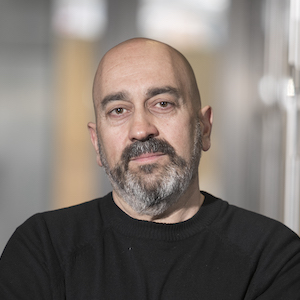 Prof. Guillermo Bautista Pérez - Senior Lecturer and researcher Universitat Oberta de Catalunya
Prof. Guillermo Bautista Pérez - Senior Lecturer and researcher Universitat Oberta de Catalunya Ing. Mariachiara Mazzucato - Ufficio Sviluppo Edilizio, Area Edilizia e Sicurezza, Università degli Studi di Padova
Ing. Mariachiara Mazzucato - Ufficio Sviluppo Edilizio, Area Edilizia e Sicurezza, Università degli Studi di Padova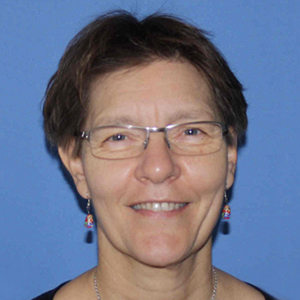 Prof.ssa Gitte Kolstrup - Library Director. University of Stavanger, Norway
Prof.ssa Gitte Kolstrup - Library Director. University of Stavanger, Norway Prof. Gerard L. Hanley –
Prof. Gerard L. Hanley – 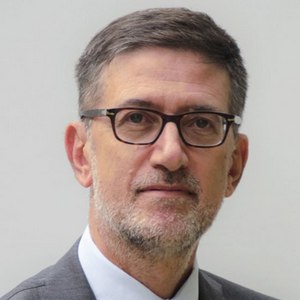 Prof. Roberto Verdone – Direttore del Laboratorio Nazionale di Comunicazioni Wireless, WiLab, del Consorzio Nazionale Interuniversitario per le Telecomunicazioni
Prof. Roberto Verdone – Direttore del Laboratorio Nazionale di Comunicazioni Wireless, WiLab, del Consorzio Nazionale Interuniversitario per le Telecomunicazioni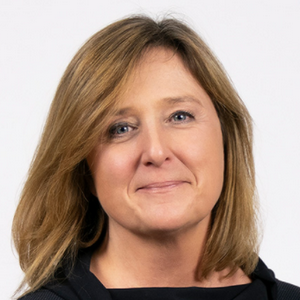 Prof.ssa Susanna Sancassani Managing Director METID Polimi
Prof.ssa Susanna Sancassani Managing Director METID Polimi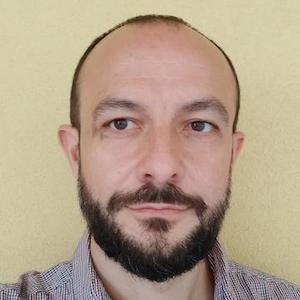
 Prof. Marco Toffanin – Responsabile settore multimedia all’Ufficio Digital Learning e Multimedia dell'Università di Padova e docente di comunicazione multimediale
Prof. Marco Toffanin – Responsabile settore multimedia all’Ufficio Digital Learning e Multimedia dell'Università di Padova e docente di comunicazione multimediale
